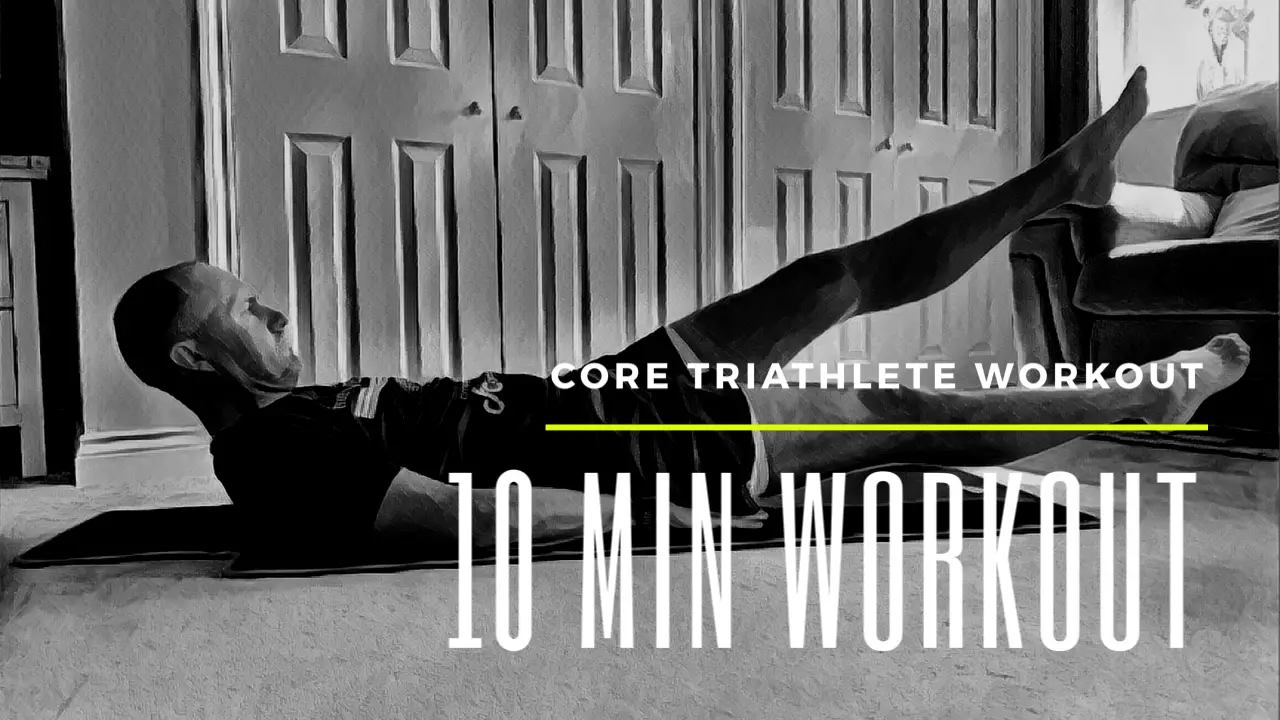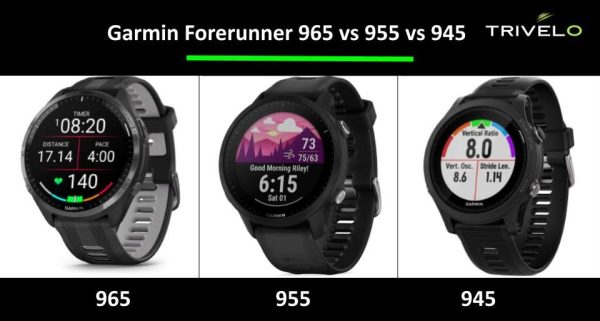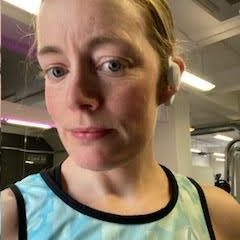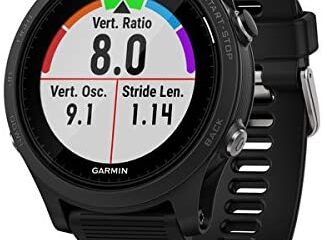Triathletes and endurance athletes like me are often data obsessed. If I haven’t recorded a workout then it hasn’t happened in my book. Garmin having an outage is a serious incident in my household. I’ve been an avid watcher of my VO2 max numbers and trying to improve my numbers for the past decade. VO2 max is important for triathletes impacting all 3 disciplines which I will discuss why and how you can track yours. Check out the guide to VO2 max for triathletes compiled using our awesome team of Trivelo triathletes and from my experience as an age group triathlete.

What is VO2 Max?
On a day to day basis in training I tend to rely on heart rate monitoring and training zones. For anyone who has ever looked for performance gains they are likely to have heard about VO2 max. So, What is VO2 Max?
VO2 max means maximal oxygen consumption. It is a measurement of the maximum amount of oxygen your body can use during intense exercise. It is one of the most important indicators of cardiovascular fitness and aerobic capacity across a range of sports.
With triathlon needing you to improve across 3 separate sports VO2 max is relevant for all of these. VO2 max is typically expressed in milliliters of oxygen per kilogram of body weight per minute (ml/kg/min).
VO2 max measures your body’s ability to take in, transport, and use oxygen to produce energy during physical activity. It measures the efficiency of your cardiovascular and respiratory systems. We all have different levels from a base level and can all improve this number. We will come onto ways on how to improve your VO2 max in this post.
A higher VO2 max indicates a greater capacity for sustained, high-intensity exercise. If you are a triathlete thinking about going long and ironman this is incredibly relevant. Triathletes with a high VO2 max can typically maintain a faster pace or higher power output during endurance events. Translated you can go faster and get closer to the front whatever category you race in.
Your VO2 max result is the point at which oxygen consumption plateaus. Beyond this point, additional efforts lead to fatigue. You slow down and cannot sustain the same pace. You can use this to measure the effectiveness of your training for triathlon.

Why does VO2 max matter for triathletes?
Triathlon races are endurance events. Even a Sprint triathlon requires an above average level of fitness so it is not just relevant for Ironman triathletes. Triathlon needs you to sustain high-intensity efforts over extended periods. Up to 17 hours for Ironman as an extreme. A high VO2 max means you have a better aerobic capacity. This is crucial for maintaining performance throughout the entire race. Finish strong!
A higher VO2 max shows that your body can use oxygen efficiently during exercise. Being more efficient is essential for maintaining a race pace during the triathlons. I have started really strong in enough races to then be devastated as others pass me during the bike and run as my pace fades. Knowing your VO2 max is a great way to manage this and bring some science to the table.
Swimming is less impacted by VO2 max due it having a higher need for efficiency than cycling and running in triathlon. Swimming improvements can be significantly gained from technical improvements as it is a complex technical discipline. Cycling being generally the longest duration of a triathlon demands more from oxygen conversion to energy and running as the final discipline. Where you begin to fatigue at the end of the race in the run section knowing your VO2 max can be beneficial in maintaining a good pace.
Understanding and monitoring your VO2 max in triathlon training can help to tailor your programs. A coach can help you focus on improvements in aerobic capacity with workouts to increase your VO2 max. We will cover more on how to do these later in this post.
In my opinion and from our panel of experts in the Trivelo squad VO2 max is crucial for triathletes. It directly impacts aerobic fitness and endurance. Monitoring and improving VO2 max can lead to better overall performance in triathlons and help you creep up the rankings. Yes you can achieve that podium finish!
If you have also spotted normalized power as a metric but didn’t know what it was read our post on what is normalized power. Understand how this is calculated and how it differs from average power readings.
How to Improve your VO2 Max
Possibly the bit you were most interested in. How can you improve your VO2 max? Working with our triathlon coaches we have compiled the Top 10 ways to improve your VO2 Max:
- Interval Training: High-intensity interval training (HIIT) is one of the most effective ways to boost VO2 max. A HIIT workout has short bursts of intense effort followed by brief recovery periods. A HIIT session for running could be doing a series of 30-second sprints followed by 1-2 minutes of easy jogging. Repeat this for several sets during a workout.
- Threshold Training: These are workouts that target your anaerobic threshold. Tempo and lactate threshold workouts, will improve your VO2 max. These workouts help raise the intensity at which your body produces lactic acid. This allows you to sustain higher levels of effort.
- Long, Steady-State Efforts: Extended periods of moderate to high-intensity exercise can also boost VO2 max. You can work on this especially well through cycling training. This could involve maintaining a challenging pace for an extended period during long rides.
- Progressive Overload: Continuously pushing your cardiovascular system in training. You can do this by gradually increasing the intensity and duration of your workouts. This technique of progressive overload stimulates physiological adaptations. As your fitness improves so does your VO2 max.
- Variation: Mix up your training routine with a variety of workouts, including shorter, more intense efforts and longer, steady-state sessions. This variety can prevent training plateaus and lead to better gains.
- Fartlek Training: Fartlek is a Swedish word. Nothing rude. Directly translated it means “Speed Game”. This is not a hugely useful explanation on what is involved. Fartlek training involves unstructured intervals where you vary your effort levels during a workout. During a swim, cycle or run this would mean you vary your effort from maximum to easy throughout. Mixing up the duration to keep your body guessing. It combines aerobic and anaerobic efforts and can be an effective way to improve VO2 max.
- Cross-Training: This is the process of adding in additional types of training into your routine. Triathlon already has 3 disciplines included and cross-training is adding more variety of aerobic exercise. This could be rowing or skiing as an example. The concept is challenge your cardiovascular system in different ways and prevent overuse injuries from more frequent exercises. I am a big fan of the rowing machine for this built into my routine.
- Strength Training: Building strength is important as you age as muscle mass reduces over time. For triathlon it is especially important in your lower body and core. Doing this can help you maintain a higher power output during intense efforts, indirectly benefiting your VO2 max. Check out our post with the key exercises for core strength for triathletes. A series of exercises I have developed complete with a recommended workout for triathletes.
- Rest and Recovery: Every triathletes worst discipline! Certainly in my case. I am rubbish on a rest day and restless as hell. That said for VO2 max gains it is essential to ensure you have adequate rest and recovery between high-intensity workouts. This allows your body to adapt and grow stronger.
- Nutrition: Proper nutrition, including a balanced diet with adequate carbohydrates for energy and protein for muscle repair, is crucial for fueling your workouts and supporting VO2 max gains. Teresa one of our nutrition specialists has created this essential guide to nutrition for triathletes. Brilliant reading if you have been ignoring nutrition in your weekly plans thus far.
Do Triathletes have high Vo2 Max?
It is a very subjective question but generally people who regularly exercise have a higher VO2 max than those who don’t. Triathletes tend to have above-average VO2 max values compared to the general population because of the aerobic demands of their sport. With a varied exercise training regime your body is regularly tested helping build up your VO2 max. As your performance improves in triathlons you need a high level of aerobic fitness, which is reflected in higher VO2 max.
However, it’s important to note that VO2 max values can vary significantly among triathletes. Genetics, training history, and individual responses to training all play a role in determining an athlete’s VO2 max potential. While triathletes generally have higher VO2 max values than the average population, there is still a wide range of VO2 max levels within the triathlete community.
So, what is a good VO2 max score for triathletes? A VO2 max between about 34 and 42 is considered fair and anything between 43 and 51 is good. Any VO2 max score of over 51 is excellent. The world record VO2 max score is 96.7 ml/kg/min recorded by Oskar Svendsen. Unfortunately not a triathlete. He is however a cyclist. There is hope for him yet. In August 2012, Oskar Svedsen tested the highest VO2 Max measurement in recorded history before the 2012 Junior World Time Trial Championships.
Check out our guide on what bikes you can use for a triathlon? Essential reading to ensure you don’t turn up in the transition area to rack your bike and can’t race.
How accurate is Garmin VO2 max?
If like me you own many Garmin devices you will see they support VO2 max stats. The Garmin Forerunner 965 watch includes VO2 max estimates. While running or cycling Garmin uses algorithms to estimate your VO2 max score. This is done using data, such as heart rate, age, gender, activity type, and fitness level, to estimate VO2 max. These estimates are based on predictive models, and the accuracy depends on the quality and reliability of the data. Your Garmin watch will give you an estimate and categorise these as follows:
- Purple – Superior
- Blue – Excellent
- Green – Good
- Orange – Fair
- Red – Poor
If you are thinking of buying the Garmin Forerunner 965 look at our review of the Garmin 965 v 955 v 945. We share how the flagship triathlon watch has evolved and if the 965 really is the best.
How is VO2 max measured?
VO2 max is typically can most accurately be measured in laboratory-based tests but it can be estimated from normal training exercises. Lab-Based VO2 max testing for most accurate results uses direct gas Analysis. This involves the triathlete wearing a mask or mouthpiece. This is connected to equipment that analyzes the oxygen and carbon dioxide content of inhaled and exhaled air. This allows for precise measurement of oxygen consumption during exercise.
The best training for training to measure VO2 max is either cycling or swimming. I personally don’t favour the Cooper test over 12 minutes running. To calculate VO2 max while swimming you swim as far as possible in 12 minutes. You then measure heart rate that is used to estimate VO2 max. To calculate VO2 max while cycling you use a turbo trainer and complete a 20-minute FTP (Functional Threshold Power) test. You use power output data to estimate VO2 max.
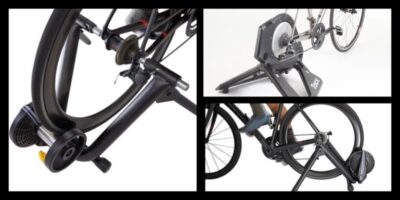
As outlined above smart triathlon watces can estimate VO2 max from heart rate data. They are useful to track improvements in overall fitness they are not as accurate.
Lab-based testing is the gold standard for accurately measuring VO2 max. However, field tests and predictive equations can provide valuable estimates and are more accessible for many individuals.
How does age affect VO2 max?
As an over 40 age group triathlete myself I tend to consider affects of aging on training and racing. VO2 max tends to decline with age. This decline is influenced by various physiological and lifestyle factors. Aging results in a natural decline in cardiovascular and respiratory function. As people age, their heart’s ability to pump blood and oxygen to the muscles decreases slightly. This leads to a reduction in VO2 max. Also as outlined above muscle mass declines with age. Make time for strength training everyone! As muscle mass decreases there is less muscle tissue to consume oxygen. Resulting in lower VO2 max.
It’s important not to forget that while VO2 max tends to decline with age, regular exercise and physical activity can help mitigate this. Engaging in consistent aerobic and strength training exercises helps to improve and maintain cardiovascular fitness, muscle mass, and lung function. This ultimately helps maintain a higher level of VO2 max as you get older. Fight the clock and stay young.
